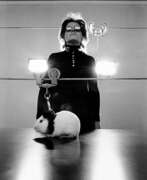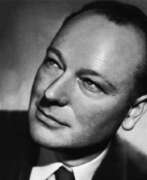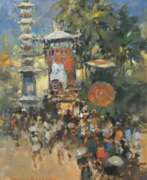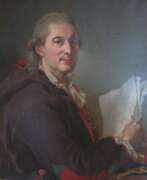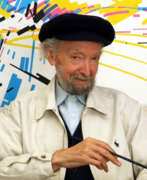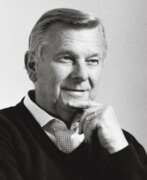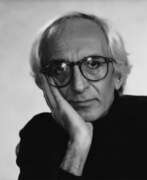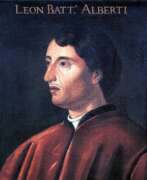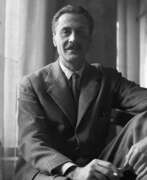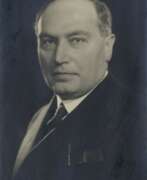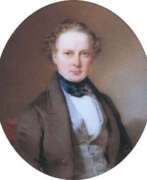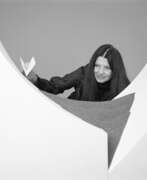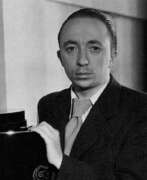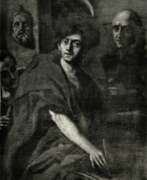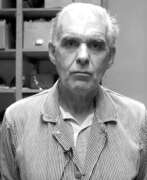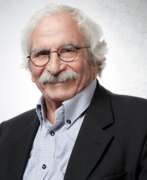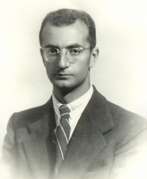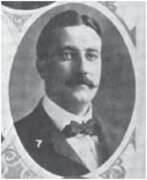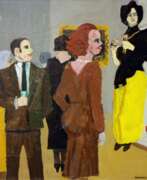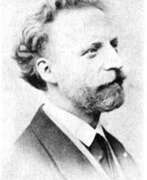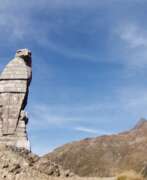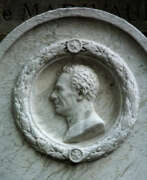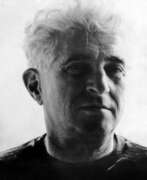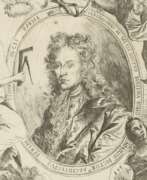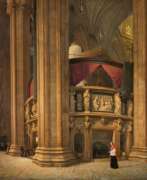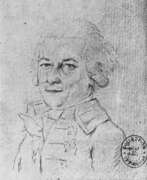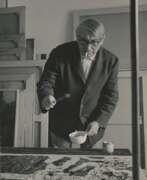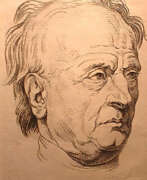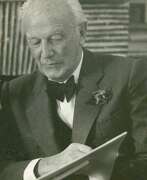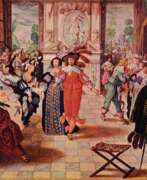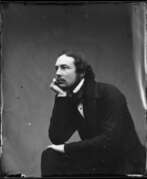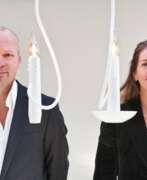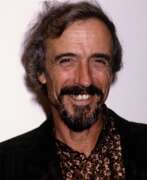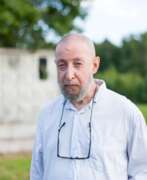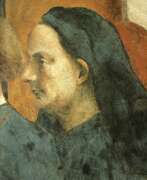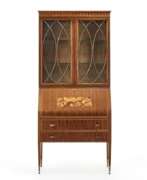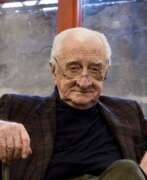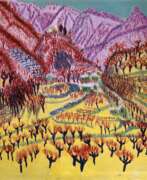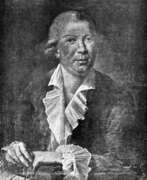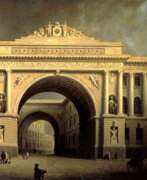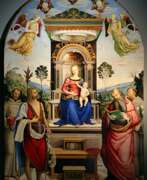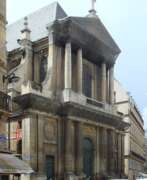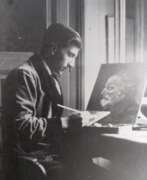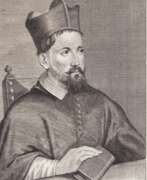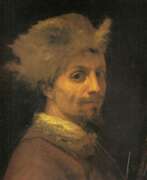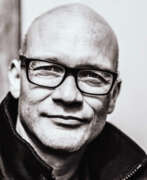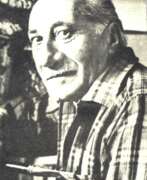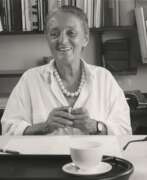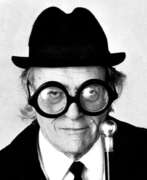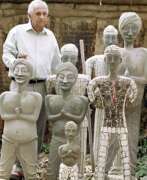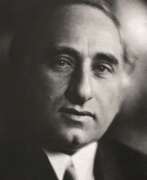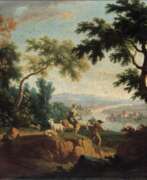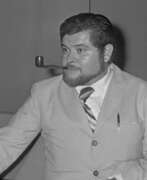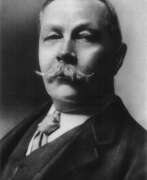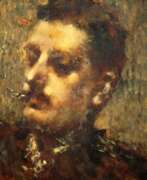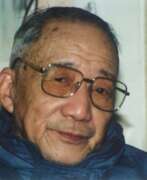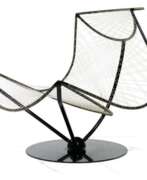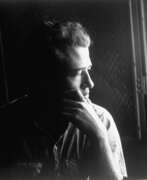Architects
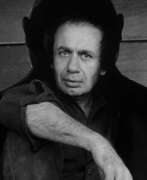

Vito Acconci was an American artist, designer, and architect. He is best known for his pioneering work in the field of performance art and for his provocative installations that explore the relationship between the human body and space.
Acconci received a Bachelor of Arts degree from Holy Cross College in 1962. He later earned a Master of Fine Arts degree from the University of Iowa.
In the late 1960s and early 1970s, Acconci became known for his groundbreaking performance works, which often involved the artist subjecting his own body to various forms of physical and psychological stress.
In the 1980s and 1990s, Acconci shifted his focus to installation art, creating immersive environments that challenged viewers' perceptions of space and their own bodies. He also worked as a designer and architect, creating public sculptures and buildings around the world.
Acconci's work has been exhibited in major museums and galleries worldwide, including the Museum of Modern Art in New York and the Venice Biennale. He received numerous awards and honors for his contributions to contemporary art, including the Skowhegan Medal for Sculpture in 1995.
His legacy as an influential and provocative artist continues to be felt in the contemporary art world today.
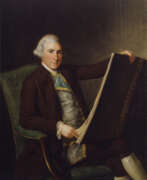

Robert Adam was a Scottish architect and interior designer, best known for his work during the Rococo and Neoclassical periods in Britain. He was born in 1728 in Kirkcauld, Scotland, and studied at the University of Edinburgh.
Adam began his career as an architect in 1754 and quickly became known for his innovative approaches to architecture and interior design. He developed his own style, which combined elements of rococo, classicism and antiquity.
He designed many buildings, including residences, palaces, churches, bridges and furniture. He also participated in designs for gardens and landscapes. One of Adam's best known projects is the Admiralty Building in London, built in the 1760s.
Adam was also known for his experiments with colour and form in interior design. He often used light colours, mirrors and mouldings to create larger and lighter spaces.
Robert Adam died in London in 1792, but his legacy continues to influence architecture and design in Britain and around the world.
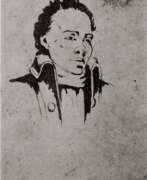

Antônio Francisco Lisboa, known as Aleijadinho, was a renowned sculptor, carver, and architect in Colonial Brazil. His exceptional works adorned numerous churches across the country, showcasing a style influenced by Baroque and Rococo. Considered the greatest exponent of colonial art in Brazil, Aleijadinho is recognized internationally as a leading figure in Baroque art in the Americas.
Despite limited biographical information, his contributions are celebrated through the vast body of work he left behind. His creations, including carvings, architectural projects, reliefs, and statues, were concentrated in Minas Gerais, notably in Ouro Preto, Sabará, São João del-Rei, and Congonhas. The Church of Saint Francis of Assisi in Ouro Preto and the Sanctuary of Bom Jesus of Matosinhos showcase some of his most significant works.
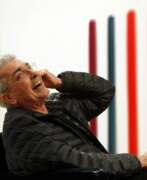

Peter Alexander was an American artist who was part of the Light and Space artistic movement in southern California in the 1960s. He is notable for his resin sculptures from the 1960s and 1970s. He studied architecture in England before receiving both his BFA and MFA from the University of California, Los Angeles. Alexander started as an architect, before developing a reputation in the 1960s for creating his sculptures.


Wobbe Alkema is a Dutch artist, graphic artist, architect, designer and sculptor. He is known for his abstract and geometric works, often combining elements of constructivism and De Stijl.
Alkema was trained as an architect and then turned to art, studying at the Academy of Fine Arts in Groningen. In the 1920s he was involved with the artist collective De Ploeg, which was active in the northern Netherlands and promoted modernist art and culture.
Throughout his career, Alkema continued to explore the principles of abstraction and geometry in his work. His paintings often feature simple geometric shapes such as squares, circles and triangles arranged in complex compositions that suggest movement and depth. He was also interested in the interaction of colour, using bright, bold hues to create dynamic contrasts and harmony.
In addition to painting, Alkema created a number of sculptural works, including abstract reliefs and freestanding sculptures. He also designed furniture and other functional objects, applying his principles of abstraction and geometric form to everyday objects.
Alkema's work is held in the collections of several museums in the Netherlands, including the Groninger Museum and the Amsterdam Stedelijk Museum. He is considered an important figure in the development of abstract art in the Netherlands, and his work continues to be admired for its innovative use of form and colour.
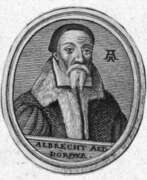

Albrecht Altdorfer, a notable German painter, engraver, and architect of the Renaissance era, was especially recognized for his contributions to landscape painting. Born around 1480, Altdorfer was a pivotal figure in the Danube School, distinguishing himself with his integration of natural landscapes into biblical and historical narratives.
His works are celebrated for their detailed and expressive landscapes, often serving as backdrops to religious and historical scenes. A hallmark of his style is the emotional intensity and vivid use of colors, which border on expressionistic in his religious scenes, particularly seen in works like the Sebastian Altar in St. Florian's Priory. Altdorfer's painting, "The Battle of Alexander at Issus," stands out for its epic portrayal of Alexander the Great's victory, showcasing Altdorfer's talent in blending historical narrative with dramatic landscape settings.
In addition to his artistic pursuits, Altdorfer was actively involved in the civic life of Regensburg, serving as its mayor in 1528. His legacy in the art world is profound, with his innovative approach to landscape painting influencing the course of European art.
For those interested in delving deeper into Albrecht Altdorfer's oeuvre or staying informed about related exhibitions and auction events, signing up for updates can provide valuable insights and opportunities.
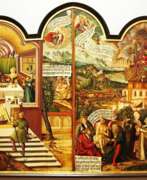

Erhard Altdorfer, a German Early Renaissance printmaker, painter, and architect, is renowned for his contributions to the arts during the 16th century. Born around 1480, Altdorfer's career flourished in Schwerin, where he served as a court painter and architect for the Dukes of Mecklenburg from 1512 until his death in 1561. His journey into the arts likely began under the guidance of his older brother, Albrecht Altdorfer, a prominent figure in the same era.
Altdorfer's early work possibly included collaboration with his brother in Regensburg. By 1512, his talents led him to Schwerin, marking the start of a significant phase in his career. His oeuvre includes various forms, from engravings and woodcuts to paintings and architectural designs. Notable among his works are contributions to the Lübeck Bible, showcasing his skill in woodcut illustrations. Despite the limited number of signed works, his contributions to printmaking and painting hold a place in the history of German Renaissance art. His works, reflecting a blend of influences, including from Lucas Cranach the Elder and Jacopo de' Barbari, demonstrate a unique interpretation of the Renaissance style.
For collectors and experts in art and antiques, understanding Altdorfer's role within the context of the Early Renaissance and his contributions, especially in printmaking and painting, offers a nuanced appreciation of this period. His works, though not as prolifically signed as those of some contemporaries, remain significant for their historical and artistic value. To stay updated on new discoveries or auction events related to Erhard Altdorfer's works, consider signing up for updates to deepen your knowledge and collection of Renaissance art.
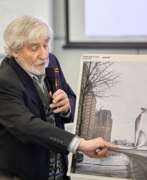

Valery Vladimirovich Androsov (Russian: Валерий Владимирович Андросов) is a Soviet and contemporary Russian artist. He is known as a sculptor, architect, designer, painter, graphic artist and teacher.
Valery Androsov creates landscapes, still lifes and portraits, as well as fantasy works. He is also known as the author of a large collection of ex-libris that accurately convey the character and interests of book owners. At different periods he served as chief artist of the Mosstroiplastmass Combine and director of the Mytishchi Picture Gallery. He also created monuments to those who died in the Great Patriotic War and to the pilots of the Mytishchi Aero Club, showing his skill in various artistic directions.
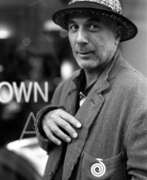

Ron Arad (Hebrew: רון ארד) is a contemporary Israeli-born artist, architect, and designer known for his innovative and boundary-pushing creations.
Throughout his career, Arad has explored various materials and techniques, embracing both handcrafted and technological processes. His designs often blur the boundaries between art and design, challenging conventional notions of form and function. Arad's furniture pieces are characterized by their sculptural qualities, organic shapes, and a sense of fluidity.
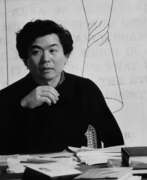

Shusaku Arakawa was a Japanese conceptual artist and architect. He had a personal and artistic partnership with the writer and artist Madeline Gins that spanned more than four decades in which they collaborated on a diverse range of visual mediums, including: painting & printmaking, experimental filmmaking, performance art, and architectural & landscape design.


Erik Gunnar Asplund was a Swedish architect, mostly known as a key representative of Nordic Classicism of the 1920s, and during the last decade of his life as a major proponent of the modernist style which made its breakthrough in Sweden at the Stockholm International Exhibition (1930). Asplund was professor of architecture at the Royal Institute of Technology from 1931. His appointment was marked by a lecture, later published under the title "Our architectonic concept of space." The Woodland Crematorium at Stockholm South Cemetery (1935-1940) is considered his finest work and one of the masterpieces of modern architecture.
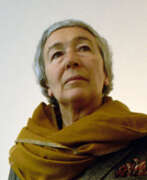

Gaetana (Gae) Aulenti was an Italian architect and designer who was active in furniture design, graphic design, stage design, lighting design, exhibition and interior design. She was known for her contributions to the design of important museums such as the Musée d'Orsay in Paris (in collaboration with ACT Architecture), the Contemporary Art Gallery at the Centre Pompidou in Paris, the restoration of Palazzo Grassi in Venice, and the Asian Art Museum of San Francisco (in collaboration with HOK Architects). Aulenti was one of only a few women architects and designers who gained notoriety in their own right during the post-war period in Italy, where Italian designers sought to make meaningful connections to production principles, and influenced culture far beyond Italy. This avant-garde design movement blossomed into an entirely new type of architecture and design, one full of imaginary utopias leaving standardization to the past.
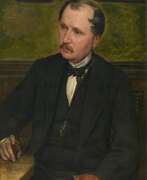

Alphonse Balat, full name Alphonse Hubert François Balat, was a Belgian architect.
He studied at the Academy of Namur and earned an architect's degree from the Academy of Antwerp in 1838. Balat's neo-Renaissance work soon came to the attention of the high nobility of Brussels, and he began to receive prestigious commissions.
In 1856, he built the city palace (Hotel) of the Marquis of Asch. After Leopold II ascended to the throne in 1865, Balat became his chief architect. He designed a number of projects for the luxurious reception areas of the Royal Palace of Belgium, such as the Throne Room, the Grand Staircase and the Grand Gallery. Alphonse Balat's most successful architectural project is considered to be the Lacuna Royal Greenhouses, where he pioneered the use of floral motifs, which later became the basis of the Art Nouveau style.
Alphonse Balat also built a large number of private residences during his career.
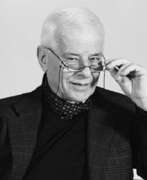

Carlo Bartoli is an Italian architect and designer. Author of numerous projects, such as the Gaia chair, included in the permanent design collection of the MoMA in New York and the Milan Triennale Design Museum, and the 4875 chair for Kartell, the world's first made of polypropylene, as well as part of the design collection of the Pompidou Center in Paris.
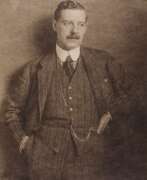

Peter Behrens was a seminal figure in modern design and architecture, heralded as the first industrial designer and a pioneer in modernist architecture. Born in Hamburg, Germany, Behrens's influence spanned across various domains, including architecture, industrial design, and graphic design. His holistic design approach was revolutionary, encompassing everything from architectural projects to corporate identities.
Behrens's association with AEG (Allgemeine Elektrizitäts-Gesellschaft) marked a significant chapter in his career. Hired as an artistic consultant in 1907, he crafted a comprehensive corporate identity for AEG, including the iconic AEG Turbine Factory (1909), a hallmark of industrial classicism and modernism. This work is celebrated for its pioneering approach to industrial architecture and design, integrating form and function with unprecedented clarity and coherence.
His architectural ventures displayed a versatility and an evolution of style, from the monumental, stripped classical form seen in the German Embassy in St Petersburg (1912) and the Administration Building for Continental AG in Hannover (1912-1914), to the expressive Brick Expressionism of the Technical Administration Building of Hoechst AG in Frankfurt (1920-1924). Behrens's work in the 1920s, including the design for the 'New Ways' house in Northampton, UK, and contributions to the Weissenhof Estate in Stuttgart, underscored his shift towards New Objectivity and modernist principles.
Moreover, Behrens's educational contributions were profound, with his teaching stints at the Academy of Fine Arts Vienna influencing a new generation of architects, including luminaries such as Ludwig Mies van der Rohe, Le Corbusier, and Walter Gropius, who would themselves go on to define the course of 20th-century architecture.
Behrens's legacy is a testament to the transformative power of design, illustrating how integrated and forward-thinking approaches can redefine our built environment and the objects we use daily. His work remains an essential study for collectors, experts in art and antiques, and anyone interested in the evolution of modern design and architecture.
For updates on exhibitions and auctions featuring Peter Behrens's work, sign up for our newsletter. Stay informed about new discoveries, sales, and events related to this pivotal figure in modern architecture and design.


Mario Bellini is an Italian architect and designer. After graduating from the Polytechnic University of Milan in 1959, Bellini pursued a career as an architect, exhibition designer, product designer, and furniture designer, during the Italian economic boom of the late 20th century. Bellini has received several accolades in a variety of design fields, including eight Compasso d'Oro awards, and the Gold Medal for Lifetime Achievement by the Triennale di Milano. In 2019, the Italian President of the Chamber of Deputies, Roberto Fico, awarded Bellini a career medal, in recognition of his contributions to Italian architecture and design.
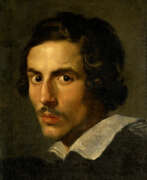

Giovanni Lorenzo Bernini, an Italian artist, is celebrated as one of the most remarkable sculptors and architects of the Baroque era. Born in Naples in 1598, Bernini's family moved to Rome when he was a child, where he spent most of his life shaping the city's artistic landscape. His prodigious talent emerged early, evident in works created in collaboration with his father, Pietro Bernini, and soon caught the attention of influential patrons like Cardinal Scipione Borghese and Pope Paul V.
Bernini's work, characterized by dynamic and exuberant style, spanned various genres including portraiture, tomb sculpture, and religious and mythological representations. His ability to turn marble into lifelike figures and scenes, blending realism with emotional intensity, was unparalleled. Key works like "Aeneas and Anchises," "Pluto and Proserpina," and "Apollo and Daphne" exemplify this mastery.
Not confined to sculpture, Bernini was also an accomplished architect, contributing significantly to the architectural landscape of Rome. His involvement with St. Peter's Basilica, notably the Baldacchino and the design of St. Peter's Square, reflect his vision of merging architecture with sculpture to create a cohesive and impactful experience. His work on the Cornaro Chapel, including the famous "The Ecstasy of Saint Teresa," showcases this integration, combining sculpture, architecture, and light to stunning effect.
Bernini's influence extended beyond Rome. In 1665, he was invited by Louis XIV to France to work on the Louvre, though his architectural designs were not realized. His portrait bust of Louis XIV, however, remains a testament to his skill in capturing not just the likeness but the essence of his subjects.
A man of deep faith, Bernini's works often reflected his religious devotion, though he was also known for his caricatures and playful sketches, revealing a lighter side to his personality. His artistic legacy, characterized by the fusion of various art forms and the dramatic use of light and space, continues to influence and inspire.
For collectors and experts in art and antiques, Bernini's works remain a pinnacle of Baroque artistry, a testament to his innovative spirit and technical brilliance. His pieces, found in museums and galleries, continue to draw admiration for their emotional depth and exquisite craftsmanship.
Stay updated on new discoveries and sales of Bernini's works by signing up for our newsletter, exclusively focused on his art and upcoming auction events.
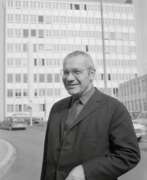

Max Bill, a Swiss artist, architect, painter, typeface designer, industrial designer, and graphic designer, emerged as a key figure in 20th-century art and design. Born in Winterthur, Switzerland, in 1908, Bill's education at the Bauhaus under luminaries like Wassily Kandinsky, Paul Klee, and Oskar Schlemmer profoundly influenced his multidisciplinary approach. His work spans from graphic design, where he was instrumental in shaping Swiss design from the 1950s, to product design with iconic creations like the Ulmer Hocker, a versatile stool designed in 1954.
Bill's contributions to concrete art and his role in founding the Ulm School of Design alongside Inge Aicher-Scholl and Otl Aicher in 1953, mark him as a pioneer who blurred the lines between art, design, and architecture. His theoretical writings and teaching at the Ulm School further underscored his commitment to integrating art with science, shaping a generation of designers and artists.
Noteworthy among his architectural works are his own house and studio built in Zurich-Höngg in the early 1930s and a series of public sculptures that challenge perceptions and engage public spaces in innovative ways. His legacy also includes influential roles in politics, contributions to the field of education, and the establishment of foundations to preserve his work and ideals.
Bill's extensive oeuvre, which also includes timepieces designed for Junghans and a multitude of sculptures, demonstrates his belief in the unity of form and function and the possibility of art to embody the principles of the new physics of the 20th century. His works are not only held in high regard for their aesthetic and functional qualities but also for their ability to convey complex theoretical ideas in tangible forms.
For collectors and experts in art and antiques, Max Bill remains a figure of immense importance, whose works continue to inspire and influence contemporary design and art practices. Sign up for updates related to Max Bill to stay informed about new product sales and auction events showcasing his remarkable contributions to modern art and design.
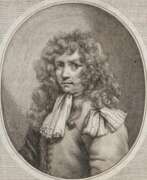

Thomas Blanchet, a distinguished French painter, sculptor, and architect, left an indelible mark on the Baroque era with his multifaceted talent. Blanchet's journey in art saw him transitioning from sculpture to painting under the guidance of Jacques Sarazin. His early years in Paris were enriched by the emerging Baroque influence and the Mannerism of the School of Fontainebleau, placing him among contemporaries like Simon Vouet.
Blanchet's formative years extended beyond French borders, as he ventured to Rome around 1645 to 1653. There, he immersed himself in the circle of Nicolas Poussin and visited the studios of Andrea Sacchi and Pietro da Cortona, earning high praise from Gianlorenzo Bernini. This period was marked by significant commissions, including works for Niccolò Guido di Bagno and the creation of engravings and mausoleums, notably in Venice for René de Voyer d'Argenson.
His repertoire was vast, encompassing classical themes, religious narratives, and architectural capriccios, as evidenced in works like "Time and Truth overcoming Envy and Discord" and "La Résurrection De Lazare". Blanchet's influence extended to Lyon, where he contributed to the city's cultural heritage through frescoes at the Collège de la Trinité, now Collège Ampère, and designed significant public and private spaces including the Palais de Roanne's grand chamber ceilings.
For collectors and experts in art and antiques, Thomas Blanchet's oeuvre represents a bridge between French and Italian Baroque, embodying the era's dramatic expressions and classical reverence. His works, found in both public spaces and museums, continue to be celebrated for their historical and artistic significance.
To stay informed about exhibitions, sales, and auctions related to Thomas Blanchet's works, signing up for our newsletter is recommended. This subscription ensures access to the latest insights and opportunities related to this Baroque master's enduring legacy.
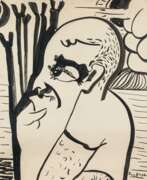

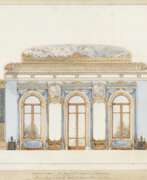

Ignatius Bonomi was an English architect and surveyor.
Ignatius Bonomi was Inspector of Bridges in County Durham, and his work included Skerne Bridge; one of the first railway bridges in Britain over the River Skerne, near Darlington for the Stockton and Darlington Railway in 1824 (hence he is sometimes referred to as "the first railway architect"). He was also responsible for a number of church buildings, historic buildings in the Gothic and Neoclassical styles.


Mario Botta, a Swiss architect born in 1943, is celebrated for his profound contributions to contemporary architecture. His work is characterized by a robust geometric style and profound respect for historical context, often integrating modern elements with traditional designs. Botta's designs are known for their distinct use of brick and strong shapes, such as circles, squares, and triangles, which make his buildings instantly recognizable.
Among his notable projects are the San Francisco Museum of Modern Art and the Cathedral of the Resurrection in Evry, France. These structures exemplify his approach to blending new construction technologies with classical forms. The museum, in particular, showcases his ability to manipulate space and light, creating dynamic environments for displaying art. His buildings are not just structures but are often considered sculptural works that enhance their surroundings.
Mario Botta's influence extends beyond architecture into design and education, where he has mentored generations of architects. His work is displayed in numerous exhibitions worldwide and serves as a testament to the enduring power of integrating contemporary design with traditional elements. Collectors and experts in architecture appreciate Botta’s unique ability to transform ordinary spaces into extraordinary places.
For those interested in the innovative work of Mario Botta, consider signing up for updates on new project unveilings and auction events related to his creations. This subscription ensures you stay informed about the latest developments and opportunities to engage with Botta's influential designs.


Michel Boyer was one of the last great interior designers who remained true to the principles of modernity.
Boyer collaborated with Dior, Lanvin, Balmain and designed interiors for hotels, embassies and numerous corporate headquarters. His private clients have included Elie de Rothschild, Liliane Betancourt and Karim Aga Khan.


Marcel Lajos Breuer was a Hungarian American modernist architect and furniture designer. He moved to the United States in 1937 and became a naturalized American citizen in 1944.
At the Bauhaus he designed the Wassily Chair and the Cesca Chair, which The New York Times have called some of the most important chairs of the 20th century. Breuer extended the sculpture vocabulary he had developed in the carpentry shop at the Bauhaus into a personal architecture that made him one of the world's most popular architects at the peak of 20th-century design. His work includes art museums, libraries, college buildings, office buildings, and residences. Many are in a Brutalist architecture style, including the former IBM Research and Development facility which was the birthplace of the first personal computer. He is regarded as one of the great innovators of modern furniture design and one of the most-influential exponents of the International Style.
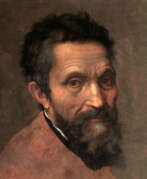

Michelangelo di Lodovico Buonarroti Simoni, known simply as Michelangelo, was an Italian sculptor, painter, architect, and poet who played a significant role in the High Renaissance period. Born on March 6, 1475, in Caprese, Italy, Michelangelo's works are a testament to his mastery in various artistic realms, defining him as a quintessential Renaissance man.
Michelangelo's fame began early in his career, most notably with his sculptures "Pietà" (1499) and "David" (1501), both completed before he turned thirty. Despite his self-perception primarily as a sculptor, Michelangelo made an indelible mark in painting, particularly with the frescoes in the Sistine Chapel. These works include the scenes from Genesis on the chapel's ceiling and "The Last Judgment" on its altar wall, showcasing his innovative use of physical realism and psychological tension.
Among his most famous works, the "David" statue, now housed in the Accademia Gallery in Florence, and the "Pietà," located in St. Peter's Basilica, stand out for their intricate detail and emotional depth. Michelangelo's ability to imbue life into marble and his thoughtful consideration of light and shadow in painting were revolutionary. His techniques in fresco painting, such as the buon fresco method used in the Sistine Chapel, where he painted on wet plaster, were groundbreaking for their time.
Despite his temperamental nature, Michelangelo was deeply religious and dedicated to his art, often eschewing the use of assistants. His works were not only recognized and admired in Italy but also attracted attention from abroad, including the Ottoman Empire. Michelangelo's influence extended beyond his lifetime, significantly impacting the development of Mannerism and the Baroque style.
For art collectors and experts, Michelangelo's works remain a pinnacle of artistic achievement. His ability to blend realism with expressive physicality in both sculpture and painting set new standards in art. His works in major museums and galleries worldwide continue to inspire and awe viewers, reflecting the enduring legacy of his genius.
For those interested in the world of art and antiques, staying informed about Michelangelo's works and their influence on modern art is essential. To receive updates on new product sales and auction events related to Michelangelo, sign up for our newsletter. This subscription is an excellent opportunity for enthusiasts and experts alike to stay connected with the ongoing legacy of one of history's greatest artists.
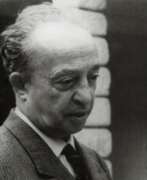

Tomaso Buzzi was an Italian architect and designer.
He also worked as a furniture and glass designer and wrote articles in Domus and Dedalo. Buzzi's slow departure from modernism accentuated after 1945, when he worked mainly as a private architect for the Italian aristocracy and the big bourgeoisie of the Volpi, Agnelli, etc.


Alonso Cano was a multifaceted Spanish artist, renowned for his remarkable contributions in painting, sculpture, and architecture. Born in Granada in 1601, Cano is often celebrated as the "Spanish Michelangelo", a testament to his diverse artistic talents and significant impact on the Baroque era. His career, marked by a blend of Italian Mannerism and Baroque style, was a journey through various Spanish cities, each phase contributing uniquely to his artistic evolution.
In Seville, Cano trained under Francisco Pacheco, where his initial works like "San Francisco de Borja" (Seville Museum of Fine Arts) displayed a blend of Tenebrism and a brighter, more lyrical color palette. This period also saw the birth of works like "La Visión de San Juan" (Wallace Collection, London), signaling a transition in his style. Madrid, however, marked a significant turn in Cano's career. His works for the Buen Retiro Palace and the Alcázar showcase an evolution towards elegant, dynamic Baroque forms with lighter tonalities, influenced by the 16th-century Venetian masters.
Cano's return to Granada in 1652 was a homecoming that not only reinvigorated the Granada School but also marked his most prolific period. His masterpieces during this time include the series of paintings on the life of the Virgin in Granada Cathedral, a remarkable testament to Baroque art. Notably, his "Inmaculada Concepción" (1648) and "Nacimiento de la Virgen" (1663-1664) in the Cathedral stand as crowning achievements of his painterly career.
Equally impressive is Cano's sculptural work, where his polychrome wooden statue of the Immaculate Conception (1655) in Granada Cathedral is often hailed as his magnum opus. Despite sculpture being a secondary focus to his painting, his works, such as the Inmaculada in San Julián Church, Sevilla, and the smaller, yet exquisitely crafted, Inmaculada of the facistol in Granada Cathedral, resonate with the delicate beauty pointing towards Rococo art.
Cano's architectural prowess is exemplified in the design of Granada Cathedral's façade, an original piece of Spanish Baroque architecture. His artistic journey was not just a personal endeavor but a pivotal influence in the transition of Spanish painting towards a more idealist trend alongside Velázquez.
For art collectors and experts, Alonso Cano's works remain a cornerstone of the Baroque era, showcasing a blend of dramatic realism and spiritual depth. His influence extends beyond the boundaries of Granada, leaving an indelible mark on the world of art and culture.
To stay informed about new discoveries, product sales, and auction events related to Alonso Cano's works, sign up for our updates. This subscription focuses solely on providing relevant news in the art and antiques realm, especially concerning Cano's invaluable contributions.
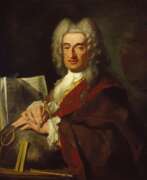

Luca Carlevaris was an Italian painter and engraver working mainly in Venice. He pioneered the genre of the cityscapes (vedute) of Venice, a genre that was later widely followed by artists such as Canaletto and Francesco Guardi.
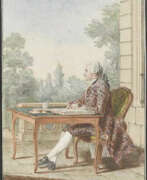

Louis Carrogis, better known as Carmontelle was a French artist, garden designer, architect, playwright and inventor.
Carmontelle was of simple origins but versatilely gifted. He wrote several plays and three novels, and created portraits of historical figures. He became famous for his painting of little Mozart at the clavier. In the service of Louis-Philippe I, Duke of Orléans, he was responsible for the theatrical performances for the family as stage designer and stage director.
Carmontelle is the planner and designer of one of the earliest examples of a French landscape garden in Paris, now known as Parc Monceau. In designing the garden, Carmontel rejected many of the fashionable trends in landscape design at the time, drawing inspiration from Japanese pleasure gardens and insisting on incorporating illusion and fantasy.
Carmontelle is also credited as the inventor of animated images. Translucent tape with landscapes depicted on it was slowly rolled from one roll to another against a backdrop of daylight, thus creating the illusion of walking through a garden.
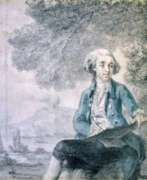

Louis-François Cassas was a distinguished French landscape painter, sculptor, architect, archeologist and antiquary.
Besides his architectural and archaeological drawings and sketches, he drew numerous costumes studies, views and processions, as well as scenes from daily life, plants and animals of all sorts. He also exhibited views of his travels at the "Salons", which were periodic art exhibitions sponsored by the French Académie Royale, in 1804 and 1814, and published Picturesque views of the Principal Sites and Monuments of Greece, of Sicily, and of the Seven Hills of Rome, of which thirty parts had already been published by 1813.
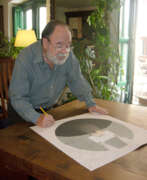

Alfredo Castañeda was a Mexican surrealist painter.
Castañeda had been interested in painting and drawing since childhood, but first became an architect, earning a degree in architecture from the University of Mexico. During his studies, he continued to paint as a hobby, which he became more and more serious about over the years. At university, Alfredo became acquainted with the painter, sculptor and architect Matthias Goeritz, as well as the work of René Magritte. Both played a huge role in the young artist's worldview.
After his studies, Castañeda worked as an architect and in 1969 had his first solo exhibition at Galeria de Arte Mexicano. His work has also been shown internationally numerous times in the United States and in many Latin American countries, including Mexico. His work is collected in collections and museums throughout the Americas, Europe and Asia.
Alfredo Castañeda is known for his surrealist paintings, often portraits. The same character appears in many of his paintings, sometimes revealed in multiple versions of himself. This person (often resembling the artist himself) seems to be engaged in an endless dialog with himself, involving the viewer as well.
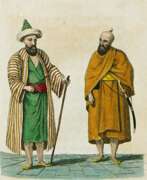

Antoine-Laurent Castellan was a French painter, engraver and architect.
Castellan traveled to Turkey, Greece, Italy and Switzerland. He was the official artist of the mission of Engineer Ferrego to the court of Sultan Selim III, spending several months in Constantinople in 1797. Castellan was a prolific draughtsman, making notes of everything he saw in Constantinople, and also engaged in portrait painting of socialites, which he captured in numerous works he published on his return to France. His best-known work is The Manners, Customs and Costumes of the Otomans and a Brief Account of their History, published in 1812.
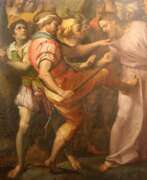

Giovanni Battista Castello was an Italian historical painter. His best-known works are the paintings on the vault of the Basilica della Santissima Annunziata del Vastato. He was an architect and sculptor as well as painter. He painted of the Martyrdom of St. Sebastian in the monastery of San Sebastiano. He worked on various projects with his friend Cambiaso, including in a chapel for the Duomo di San Lorenzo.
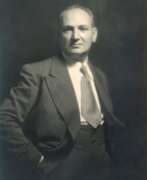

Giannino Castiglioni was an Italian sculptor and medallist. He worked mostly in monumental and funerary sculpture; his style was representational, and far from the modernist and avant-garde trends of the early twentieth century.
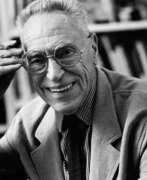

Achille Castiglioni was an Italian architect and designer of furniture, lighting, radiograms and other objects. As a professor of design, he advised his students "If you are not curious, forget it. If you are not interested in others, what they do and how they act, then being a designer is not the right job for you."


Giuseppe Kjachig is an artist outside the academic framework, was extremely versatile: a mosaicist, architect, decorator and painter, he was born in Russia because his parents were commercially active there, but retained Italian citizenship.
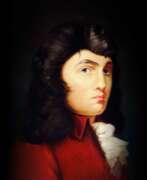

Thomas Chippendale was a cabinet-maker in London, designing furniture in the mid-Georgian, English Rococo, and Neoclassical styles. In 1754 he published a book of his designs in a trade catalogue titled The Gentleman and Cabinet Maker's Director — the most important collection of furniture designs published in England to that point which created a mass market for furniture—upon which success he became renowned. According to the Victoria and Albert Museum, «so influential were his designs, in Britain and throughout Europe and America, that "Chippendale" became a shorthand description for any furniture similar to his Director designs».
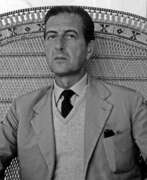

Fabrizio Clerici was an Italian painter, draftsman, illustrator, scenographer and architect.
Clerici earned a degree in architecture and was greatly influenced by antiquities, Renaissance and Baroque painting and architecture. In 1943, Clerici held his first solo exhibition at the Galleria dell'Arte Cairola in Milan, featuring drawings, watercolors, lithographs and etchings. His first book illustrations belong to the same period.
In 1947, Clerici began a prolific career in theater, ballet and opera with his debut as a stage designer in a production of George Bernard Shaw's play Mrs. Warren's Profession. The following year he participated for the first time in the Venice Biennale. There he met Salvador Dalí and created the sets and costumes for Igor Stravinsky's Orpheus, which was performed at the La Fenice Theater. In 1949 he created large-scale architectural fantasy paintings.
The further life of the multifaceted artist Fabrizio Clerici was full of work in a variety of fields of art, creative successes and exhibitions. His work has been exhibited in many museums in the United States, including MoMA and the Guggenheim Museum, as well as in France, such as the Pompidou Center.
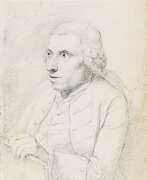

Charles-Louis Clérisseau was a French architect, draughtsman, antiquary, and artist who became a leading authority on ancient Roman architecture and Roman ruins in Italy and France. With his influence extending to Russia, England, and the United States, and clients including Catherine the Great and Thomas Jefferson, Clérisseau played a key role in the genesis of neoclassical architecture during the second half of the 18th century.
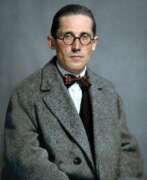

Le Corbusier, born Charles-Édouard Jeanneret in Switzerland, was a visionary French architect, designer, and writer who profoundly influenced modern architecture and urban planning. His innovative ideas blended functionalism with bold sculptural expressionism, embodying the essence of the International Style of architecture. Notably, Le Corbusier's designs, such as the Villa Savoye and the master plan for Chandigarh, India, are celebrated for their revolutionary approaches to living spaces and urban environments.
Le Corbusier's early life in La Chaux-de-Fonds, Switzerland, where he was immersed in the art and craft of watchmaking, significantly shaped his design principles. His architectural journey began without formal training, starting with his education in decorative arts and leading to significant collaborations across Europe. Le Corbusier's philosophy was deeply rooted in the belief that architecture should improve living conditions, particularly in crowded cities. This belief drove his contributions to the Congrès International d'Architecture Moderne and his development of influential architectural principles, such as the Five Points of Architecture, which are exemplified in Villa Savoye.
Villa Savoye, located in Poissy, France, stands as a testament to Le Corbusier's innovative approach, featuring pilotis (reinforced concrete stilts), a functional roof garden, an open floor plan, horizontal windows, and a free façade design. These elements collectively embody his vision of a "machine for living," integrating the house with its environment and the modern lifestyle. Despite facing issues with structural durability and weather resistance, Villa Savoye remains a pivotal work in architectural history, symbolizing the transition to modern architectural thought.
Le Corbusier's legacy is multifaceted, extending beyond architecture to furniture design and painting, showcasing his broad artistic talents. His work continues to inspire and provoke discussion, reflecting both his groundbreaking contributions to modern architecture and the complexities of his ideologies and methodologies.
If you are inspired by Le Corbusier's visionary approach to architecture and design, and wish to stay informed about related updates, consider signing up for our newsletter. This subscription will keep you in the loop about new product launches, sales, and auction events that are directly related to Le Corbusier's enduring legacy. Dive deeper into the world of architecture and design, and ensure you don't miss out on opportunities to engage with Le Corbusier's influential work. Sign up now to connect with the past, present, and future of architectural excellence.
